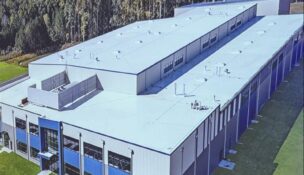JLL reports $1.8 billion in office market investment in D.C. area in first quarter
Investment sales volume in the greater Washington, D.C., office market totaled $1.8 billion in the first quarter of 2015, helping boost average office building sales prices across the area above $500 per square foot, according to JLL's first-quarter market reports.
Core transactions in the District of Columbia represented more than three-quarters of the transaction volume, well above the historic quarterly average of 53.5 percent. JLL said that the transactions were primarily the result of foreign investment, which accounted for $1.3 billion in the first quarter, a record high.
The region also has seen three office transactions achieve the market's highest per-square-foot cost in the last 12 months. In addition the cost per square foot for trophy/Class A properties has reached an all-time high, averaging $818 per square foot, according to the report.
“The trailing 12 month appreciation in asset values for downtown trophy and Class A office buildings is 20.3 percent, more than double its historical average of 8.7 percent,” JLL’s Mid-Atlantic Research Director Scott Homa said in a statement. “Overwhelming demand, low interest rates and availability of capital will continue to drive pricing for core assets located in metro D.C.”
The Washington region’s economy registered employment gains of 46,300 jobs year-over-year in the month ending January 2015, well above the long-term average growth of about 38,000 jobs, according to the report. Washington, D.C.’s primary office-occupying sector — professional and business services — registered 12-month job growth of 10,400 positions, the strongest rate in nearly two years.
Leasing activity in metro D.C. was almost exclusively focused on buildings within one-half mile of an existing or planned Metro station, with 92.3 percent of overall leasing volume concentrated in these transit-accessible locations.
“We’ve seen tenants across virtually all segments of the market gravitate to walkable, amenity-rich and transit-friendly locations,” added Homa. “Employers are recognizing that to tap into today’s highly educated millennial workforce in Washington, Metro access is an absolute requirement. Adding walkable amenities creates a dynamic environment in which employees feel more connected to the workplace, and these elements are pivotal in recruitment and employee retention.”
s

















